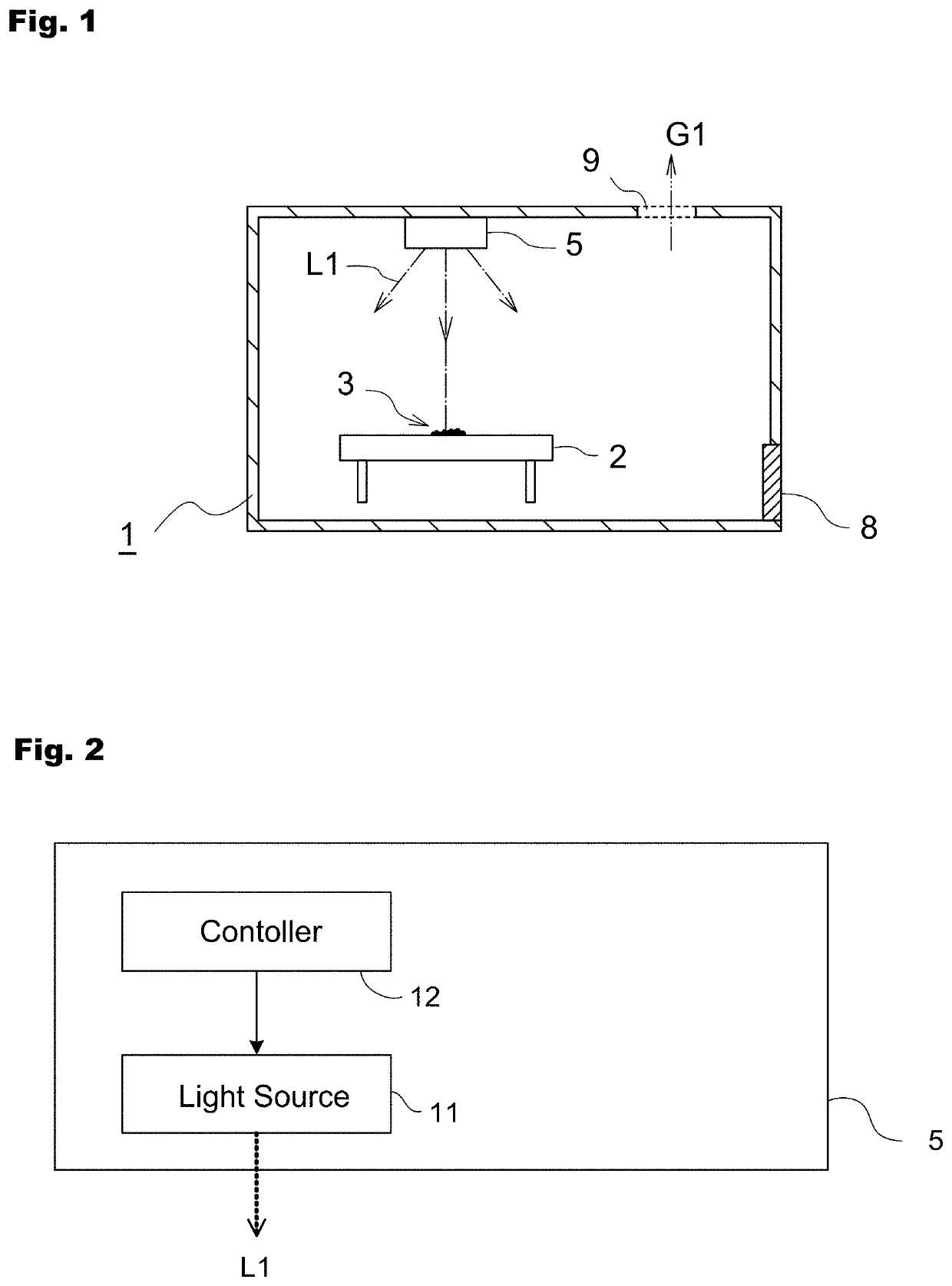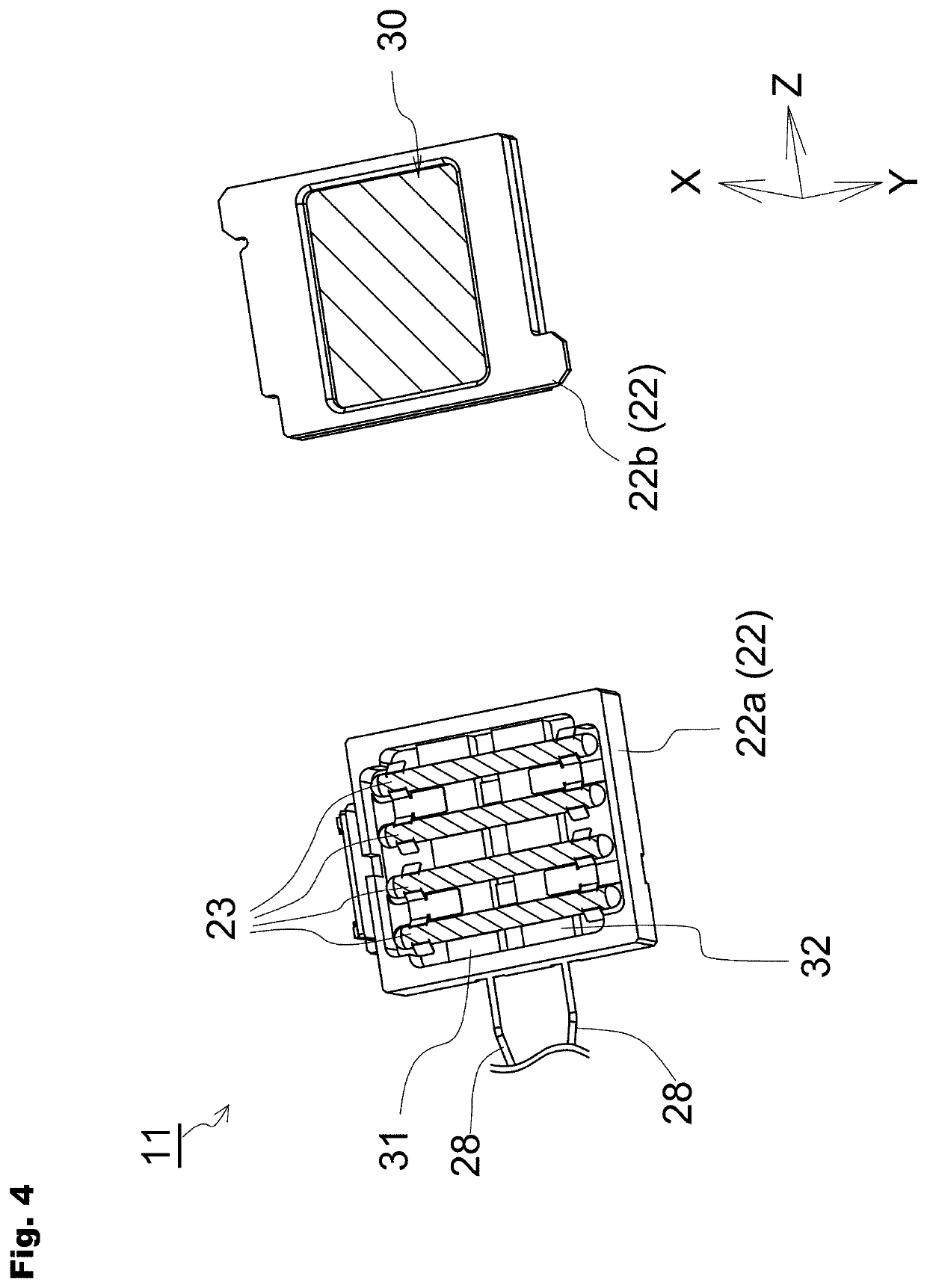Method for inactivating bacteria or viruses and inactivating apparatus for bacteria or viruses
a technology of inactivating apparatus and bacteria, which is applied in the field of inactivating bacteria or viruses and inactivating apparatus for bacteria or viruses, can solve the problems of generating a strange odor at a level detectable by humans, and achieve the effect of suppressing the generation of a strange odor and inactivating bacteria
- Summary
- Abstract
- Description
- Claims
- Application Information
AI Technical Summary
Benefits of technology
Problems solved by technology
Method used
Image
Examples
Embodiment Construction
[0048]Embodiments of a method for inactivating bacteria or viruses and an inactivating apparatus according to the present invention will be described with reference to the drawings.
[0049]In this specification, “inactivation” is a concept that encompasses killing bacteria or viruses, or causing them to lose their infectivity or toxicity. Further, herein, “bacteria” refers to microorganisms including fungi (molds).
[0050]FIG. 1 is a diagram schematically showing a state in which the method for inactivating bacteria or viruses according to the present invention is carried out. The method of the present invention relates to a method for inactivating bacteria or viruses (hereinafter referred to as “germs 3”) by irradiating ultraviolet light L1 emitted from an inactivating apparatus 5 onto a processing target 2 that is assumed to have the germs 3 attached to its surface. The term “germs” is a concept that encompasses “bacteria” and “viruses” . In other words, germs 3 are bacteria and / or vi...
PUM
| Property | Measurement | Unit |
|---|---|---|
| specific wavelength | aaaaa | aaaaa |
| wavelengths | aaaaa | aaaaa |
| wavelength | aaaaa | aaaaa |
Abstract
Description
Claims
Application Information
 Login to View More
Login to View More - R&D
- Intellectual Property
- Life Sciences
- Materials
- Tech Scout
- Unparalleled Data Quality
- Higher Quality Content
- 60% Fewer Hallucinations
Browse by: Latest US Patents, China's latest patents, Technical Efficacy Thesaurus, Application Domain, Technology Topic, Popular Technical Reports.
© 2025 PatSnap. All rights reserved.Legal|Privacy policy|Modern Slavery Act Transparency Statement|Sitemap|About US| Contact US: help@patsnap.com



